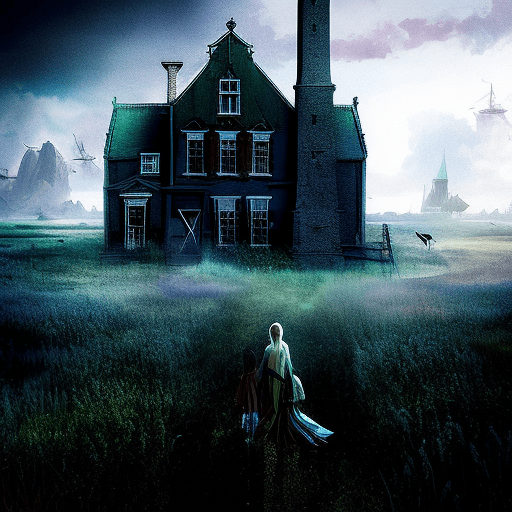The Dutch House: A Tale of Family, Loss, and Redemption
In “The Dutch House” by Ann Patchett, readers are taken on a journey through the lives of the Conroy family as they navigate love, loss, and the enduring power of memories. Set in the mid-20th century, the story revolves around the eponymous Dutch House, a grand mansion in Pennsylvania that becomes the backdrop for the family’s joys and sorrows. With themes of resilience, forgiveness, and the complexities of familial bonds, Patchett crafts a poignant narrative that explores the lasting impact of our pasts on our present.
A House That Holds Secrets
At the heart of the story is the Dutch House, a lavish estate built by the VanHoebeek family and later purchased by Cyril Conroy, a self-made real estate magnate. The house becomes a symbol of both comfort and torment for Cyril’s wife, Elna, and their two children, Danny and Maeve. The siblings are captivated by the house’s grandeur and its mysterious past, but their idyllic childhood is shattered when their mother abandons them, leaving them in the care of their distant stepmother, Andrea.
A Tale of Sibling Bonding and Resilience
As Danny and Maeve grow up, they forge a deep bond, finding solace and support in each other amidst the challenges they face. Together, they navigate their complicated relationships with their father, stepmother, and the ever-present specter of their mother’s absence. The Dutch House becomes a constant in their lives, a place of refuge and longing. Despite the hardships they endure, Danny and Maeve’s unwavering loyalty to one another serves as a testament to the strength of sibling love.
The Power of Forgiveness and Redemption
Throughout the novel, Patchett explores the themes of forgiveness and redemption. As the Conroy siblings confront the ghosts of their past, they are forced to grapple with their own resentments and find a way to move forward. The Dutch House becomes a symbol of their shared history, and in their quest for closure, they must confront the painful memories that haunt them. Through acts of forgiveness and understanding, they discover the power of letting go and embracing the possibility of a brighter future.
Key takeaways from “The Dutch House” include:
- The lasting impact of childhood experiences on our adult lives
- The complexities of family dynamics and the power of sibling bonds
- The importance of forgiveness and letting go of past grievances
- The role of memory and nostalgia in shaping our identities
- The pursuit of redemption and finding solace in unexpected places
As Patchett weaves her tale, she leaves readers with a memorable quote that encapsulates the essence of “The Dutch House”:
“Do you think it’s possible to ever see the past as it actually was?” – Ann Patchett, The Dutch House
“The Dutch House” is a captivating exploration of family, loss, and the enduring power of love. Patchett’s masterful storytelling draws readers into the lives of the Conroy family, immersing them in a world of secrets, resilience, and the complexities of human relationships. Through the lens of the Dutch House, readers are reminded of the indelible mark our pasts leave on our present, and the transformative power of forgiveness and redemption.












